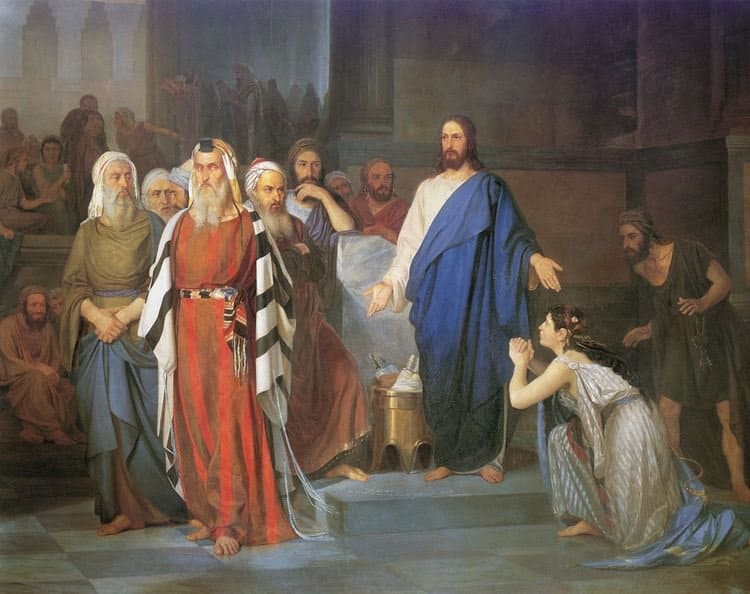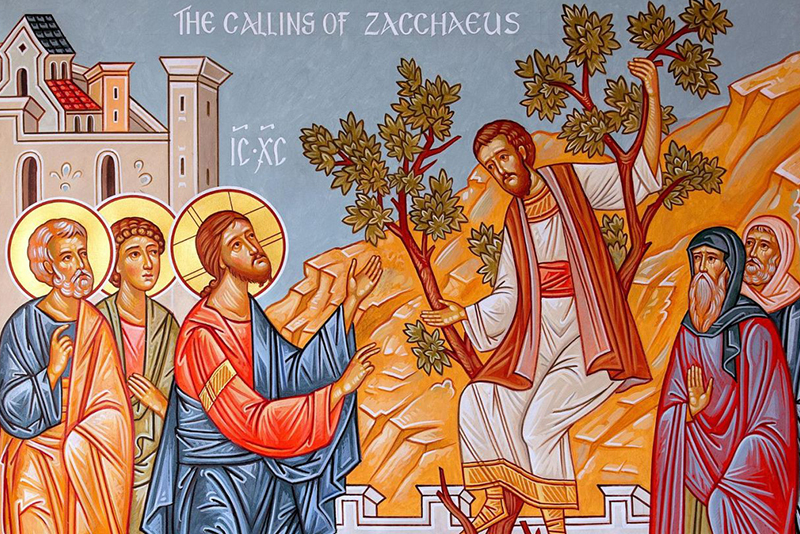
Some fragments of the Gospel cannot be fully understood without an explanation. The end of the narration about Tetrarch Herod’s trial of Christ is one example. Then Herod and his soldiers ridiculed and mocked him. Dressing him in an elegant robe, they sent him back to Pilate. That day Herod and Pilate became friends—before this, they had been enemies (Luke 23: 10, 12).
Why did they dress Christ in an “elegant robe”? And how did this attire on Jesus the prisoner turn the former enemies into friends?
These days, the significance of clothing as a social marker has diminished. It is no longer possible to know from one’s dress if one is a villager or a townsman or to tell a married from an unmarried woman. Clothing has kept this function only partially. For example, we can identify a police officer in a crowd of civilians by their uniform, and we can easily distinguish monks from visitors to a monastery by their clothing.
But in biblical times, clothing still revealed a lot more information about a person than today. The Pharisees — mentioned in the Gospel multiple times — differed from others by their phylacteries and long tassels. Phylacteries, sometimes called tefillin, were small, square leather boxes containing portions of Scripture. Phylacteries were strapped to the forehead of the men. Jesus refers to these articles of clothing when he condemned the Pharisees for their facetious observance of God’s law: “Everything they do is done for people to see: They make their phylacteries wide and the tassels on their garments long.” (Matthew 23:1-7)

The red robe into which Pilate had ordered to dress Jesus before letting his soldiers mock him also had a meaning. Kings wore purple-red mantles as their outer garments. Christ’s garment was not that of a kind, it was a part of the uniform of a Roman soldier. Yet, in combination with the crown of thorns, this attire was a travesty of a king’s dress.
The white robes also had a meaning. White togas were worn by candidates for governmental positions in the Roman Empire. To some extent, they were symbols of their purity and law-abidance. The word “candidate” translates literally as “pure” and “clean”.
So why did Herod order to dress Jesus into the dignified attire of a Roman civil servant?
On the one hand, it was his way to mock Christ and the Jews. It mocked Christ as a candidate for the throne, in a land captured by the Romans. On the other, it was his expression of support for the verdict of Pilate, who found Christ to be innocent. Herod, in turn, interpreted the referral of Christ’s case to his court as a sign of deference from Pilate. He paid for the deference with a sign of respect: he had Jesus dressed in white, conveying his innocence of the charges against him.
The white robes were also a mockery of Christ, but they have been viewed for millennia as a condemnation of the lawlessness of the death sentence handed to Christ by the Jewish Sanhedrin. Two witnesses confirmed Christ’s innocence. One of them was a tetrarch, and the other a procurator.
The Blessed Theophylact observes: “When Christ was sent back to Pilate, the truth shone forth again. Pilate said: “You brought before me this man whom you accused of sedition, but I find in him nothing that merits death, and neither does Herod. Can there be any question about the truthfulness of these two people – one a king, and the other a ruler? Neither found any guilt with this Jesus. So what can the Jews say to this? The judges are saying that he is innocent, and you, the accusers, did not bring one witness to testify in your favour. So who are we to believe? Wondrous are the ways for the truth to triumph. Christ keeps silence as his enemies speak in his favour.”
Translated by The Catalogue of Good Deeds
Source: https://foma.ru/pochemu-irod-oblachil-iisusa-v-pochetnuyu-uniformu-rimskih-chinovnikov.html





At Church, I learned a little bit about the symbolism of red and blue as it relates to Marion Iconography. Blue being humanity, and red divinity. That’s why the Theotokos is always depicted wearing a red cloak with a blue cloak underneath. Against our Iconstasis we have candlestands with red and blue candles. The red candles are placed in front of The Icon of Christ, the blue are placed in front of The Icon of the Theotokos. Is there rules with colors of cloaks and candlestands for Icons of Saints and Apostles?